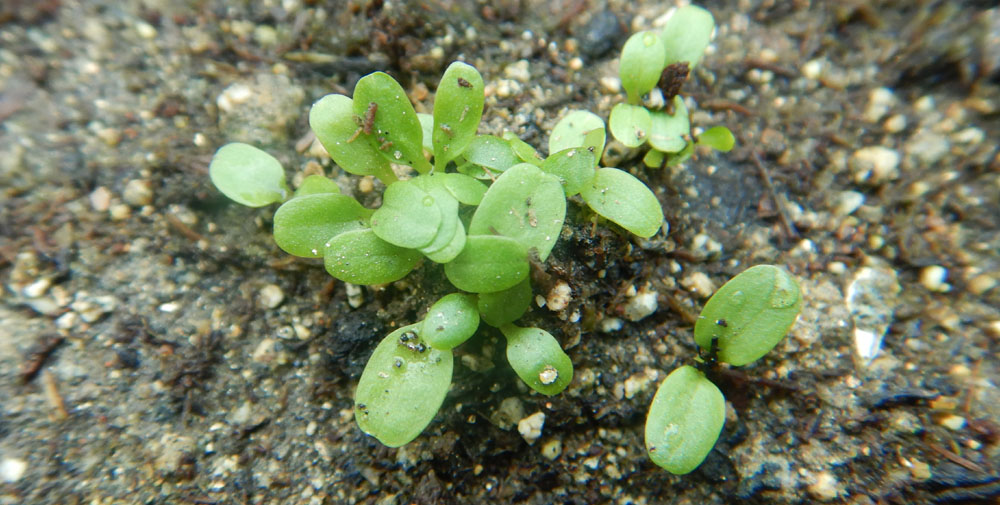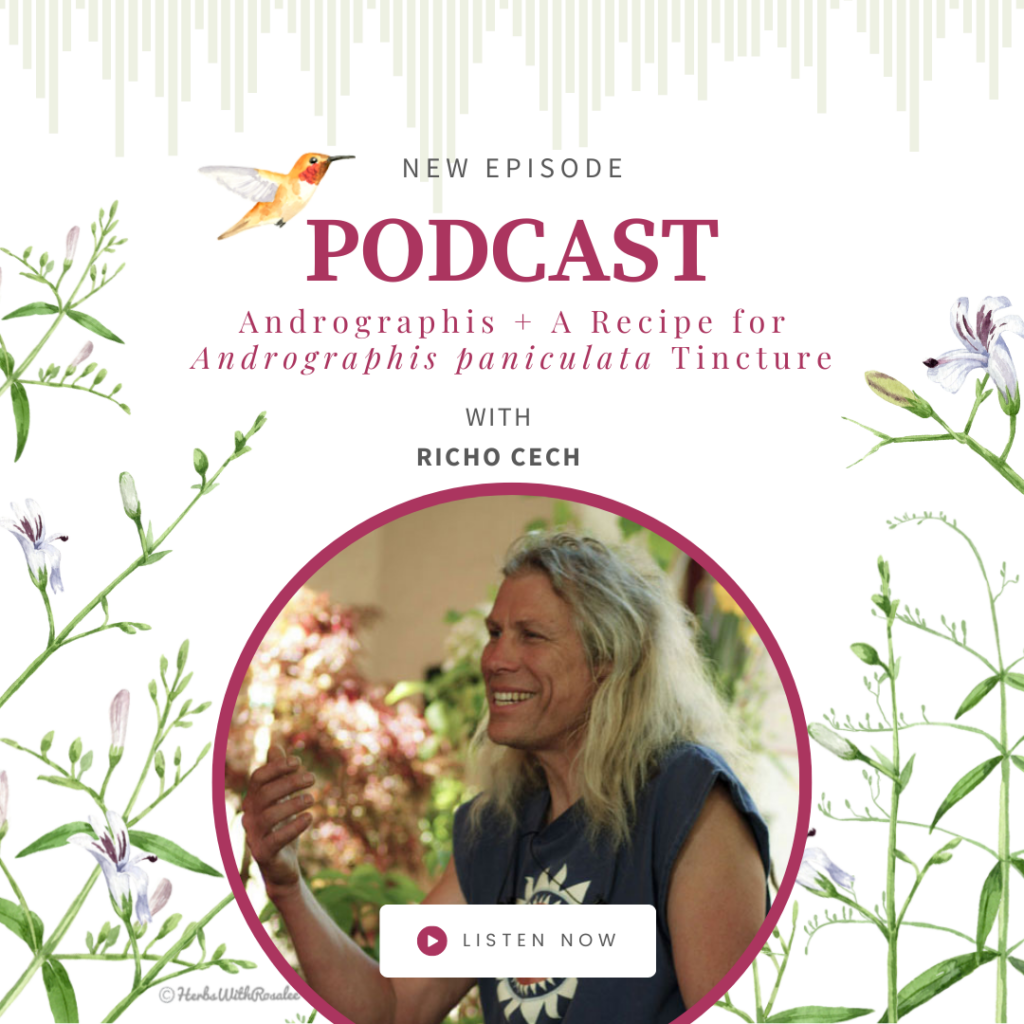

Learn from the plants. Do it. . . for the plants.
— Richo Cech
For those of you who simply cannot get a medicinal or culinary herb seed to germinate, despite your best efforts, here is something that may help.
- Choose the very easiest germinators that are also the most useful: Genovese basil, Calendula, Chinese balsam, nettles, Echinacea purpurea, summer savory, temperate tulsi, valerian, yarrow. . .
- Use a gallon pot or a deep flat filled with organic potting soil. Sprinkle all the seeds from the packet on the surface of the soil. Sprinkle in the center of the pot or in lines in the flat. Bury the seeds only as deep as they are high. This means if the seed is big, barely cover it with soil, and if the seed is small, just sprinkle it on the surface. Always tamp (that is, use the palm of your hand and compact the soil surface). Gently water after sowing the seeds. Label the planting with planting date and seed type.
- Keep the planting in a protected location where it receives sunlight during the day and cools down at night. Protect the planting from snails, rodents and birds that will eat seedlings by putting a screen over the pot or flat. Water very gently once daily or more often if the surface begins to dry out. Back off on watering once the seeds germinate. Thin the seedlings to an inch apart and transplant to the garden after they attain their second set of true leaves. A few well-grown herbs will create more useful tea than a thousand poorly-grown herbs.
- Do not use: Sterilized potting soil, peat pots, plastic over the top of the planting, bottom heat, grow lights, plug trays, vermiculite, perlite or commercial seed starting mix. Just use regular potting soil. All of these tricky and expensive methods and ingredients have their utility in commercial plantings. To the beginner, they are unnecessarily expensive and also responsible for many failures. Do not get caught up in hope and fear. Do not blame the seeds. Treat it as: a learning experience, an. . . experiment.
- Peas, beans, corn, onions, etc. are domesticated annual crops that have been selected for fast germination in warm soil garden conditions. Medicinal herbs are perennial crops that germinate slowly–therefore they are not usually seeded directly to the garden.
- Reasons: The reason to barely cover the seed with soil and tamp is because most nongermination is caused by too deep of planting and lack of tamping. The reason to use the entire packet is: critical mass. The reason to use nonsterilized potting soil is: the role of fungi and bacteria in seed germination and seedling health. The reason to start in pots is: slow germination. The reason to plant in the center of the pot or in lines in the flat is: to differentiate what you planted from random weeds that will come up. The reason to avoid bottom heat and grow lights is: failure of the planting due to the lack of temperature oscillations. The reason to not get caught up in hope, fear and blame is: your happiness.
Once you actually have success with some of these easy seeds, and you will, if these directions are followed, then you can start working with the nuances. Yes, some seeds need to be soaked, scarified or stratified. Sterile soil can help in some cases. Yes, grow lights are great if you know how to use them. Yes, some growers do well with plug trays. Just not you. Not yet. No reason to try tricky seeds or buy all that stuff. Start some easy seeds. Learn from the plants. Do it. . . for the plants.


I was so inspired that I went right outside and did this with several seeds I’ve been too intimidated to plant! Thanks for the encouragement.
I just got your essential herbs set and I am new to growing herbs. We live in South Texas where the heat has been over 100 degrees for over a month, and will remain so. The heat is dry, and there is no rain in the forecast. I do have the ability to germinate and grow inside the house, with lights. I also have shaded areas outside, but was wondering about the too high temps. What do you recommend as far as planting and germinating the seeds right now? We are zone 9a.
hi brandy 100 degree outdoor conditions not conducive for starting most seeds. herbaceous perennials need lower temps (60 to 80 degrees f for most of them). if you have indoor prop facility, use it, and transplant in the fall after temps go down. richo
I am very excited to try your seeds in the garden I did plant calendula nasturtium and borage directly into the garden. May be I will try to also do some pots with the calendula.Can they be started in pots in June.
hi karen, yes, one of the common names for calendula is “pot marigold.” r
What kind of grow lights would you recommend for starting seeds indoors and for over wintering some of my plants and herbs inside. Thia old farmhouse has got very drafty windows&the lighting is very poor…
get an 8-bulb t-5 grow light and train 18 inches above the leaf matter. keep flat on slatted table. allow natural light to shine on table also if possible. for starting seeds, train 12 inches above the flat to keep it nice and warm until the seedlings come up, then move it further away. Sometimes I keep the lights on 24/7 to spur germination, then go to turning the lights on at dawn and off at sunset. r
Do you have any advice for growing chocolate mint?
yes, obtain a chocolate mint plant and set it out in standard garden conditions–sun to part shade, moist soil, rich soil. chocolate mint is a cultivar that cannot be matched by planting seeds–it must be reproduced clonally. r
Great article! Thank you!
I just love this … as a species we are over-complicating everything usually driven by someone else’s commercial motives. Spread seed far and wide – just do it!
good point. i find that the more one invests in fancy stuff, the more one reaps disappointment